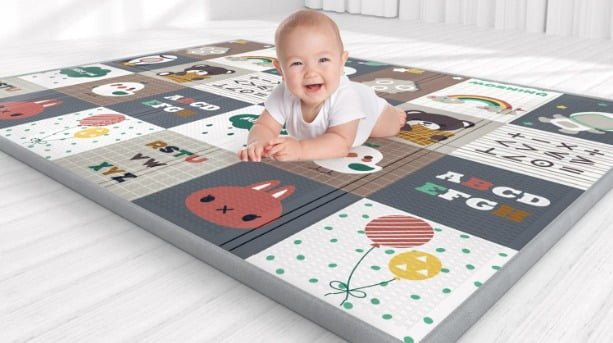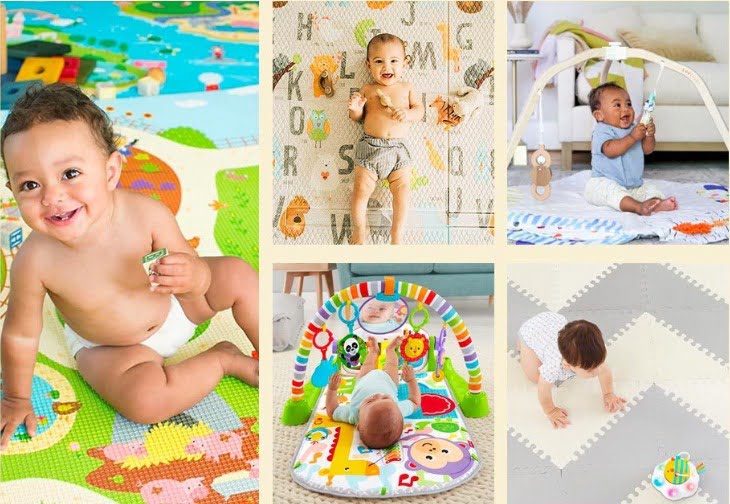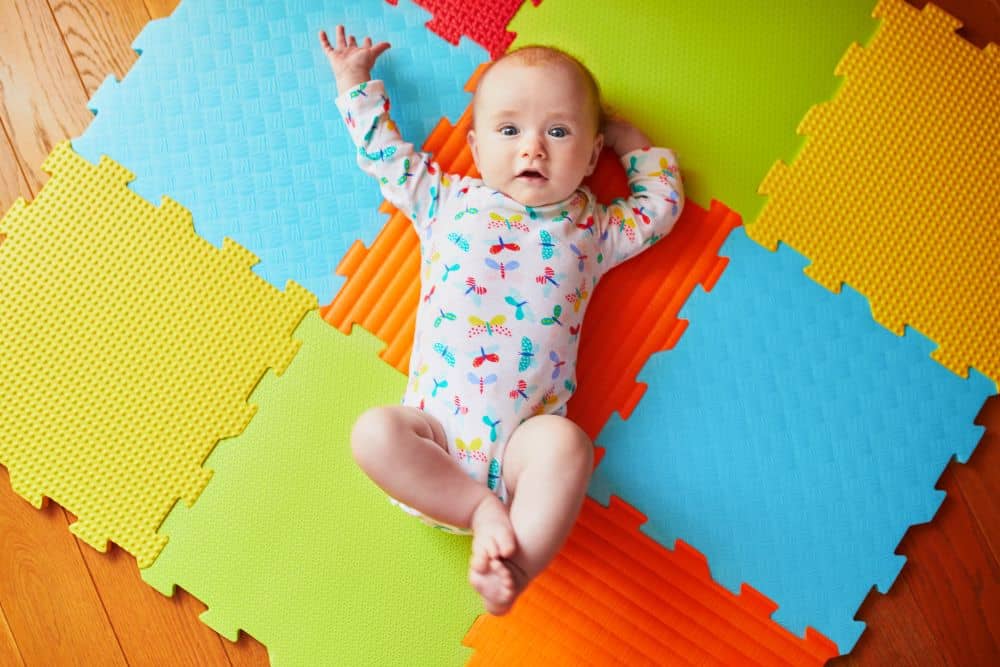
Uses Of Baby Play Mats: Unlocking Your Child’s Potential
As a parent, you are constantly seeking ways to support your child’s growth and development. One powerful tool that can aid in your little one’s journey is a baby play mat. These versatile and engaging mats offer a wide range of uses that go beyond simple playtime.
From promoting physical development to stimulating sensory exploration and fostering cognitive skills, a baby play mat is a valuable addition to your child’s early years. In this article, we will delve into the various uses of baby play mats, providing you with insights, tips, and recommendations to make the most of this essential item.
I. Promoting Physical Development
Tummy Time: Building Strength and Coordination
Tummy time is a vital aspect of your baby’s physical development. By placing your baby on their tummy on a play mat, you create an opportunity for your baby to strengthen his/her neck, back, and shoulder muscles. The soft and cushioned surface of the play mat provides a comfortable space for your baby to lift his/her head, reach for toys, and gradually build their strength.
Tip: Start with short sessions of tummy time, gradually increasing the duration as your baby becomes more comfortable. Use toys or objects with different textures and colors to capture their attention and encourage exploration.
Crawling and Rolling: Exploring Movement and Coordination
Babies are naturally curious and have an innate desire to explore their surroundings. A baby play mat offers the perfect platform for your little one to engage in crawling and rolling activities. The textured surface of the mat stimulates their senses and encourages movement, aiding in the development of gross motor skills. Crawling and rolling on the play mat allow your baby to practice coordination, spatial awareness, and balance.
Tip: Place enticing toys just out of reach to motivate your baby to move and explore. Celebrate their milestones and achievements during playtime to boost their confidence.
II. Stimulating Sensory Exploration
Colors and Patterns: Enhancing Visual Development
Baby play mats are designed to captivate and engage your little one’s visual senses. The vibrant colors and contrasting patterns stimulate their visual development and help them differentiate between various shades and shapes. As they spend time on the play mat, their eyes are exposed to a multitude of visual stimuli, contributing to the refinement of their visual perception.
Tip: Choose a play mat with a variety of bright colors and interesting patterns to capture your baby’s attention. Encourage them to focus on different areas of the mat and observe their reactions to specific colors and shapes.
Textures and Tactile Sensations: Developing Fine Motor Skills
Exploring different textures is an essential part of your baby’s sensory development. Many baby play mats incorporate various tactile elements, such as soft fabrics, crinkly surfaces, and smooth areas. These textures encourage your baby to touch, feel, and explore, promoting the development of their fine motor skills and sensory awareness.
Tip: Provide a selection of textured toys and objects for your baby to interact with on the play mat. Encourage them to touch and explore the different textures, describing the sensations as they do so.
III. Encouraging Cognitive Development
Interactive Toys and Features: Engaging the Mind
Baby play mats often come with interactive toys and features that captivate your baby’s attention and stimulate their cognitive development. These toys may produce sounds, feature mirrors, or incorporate buttons and textures. By interacting with these toys, your baby develops their hand-eye coordination, concentration, and problem-solving abilities.
*Tip: Introduce your baby to the various interactive features on the play mat, encouraging them to press buttons, feel different textures, and explore cause-and-effect relationships. Sing songs, play peek-a-boo, or make funny sounds to create a sense of excitement and engagement during playtime.
Shape and Object Recognition: Early Cognitive Skills
Many baby play mats incorporate shapes, numbers, or alphabet designs, providing an opportunity for early cognitive development. As your baby spends time on the play mat, they can begin to recognize and identify these elements, laying the foundation for shape and object recognition. Through play, they develop their cognitive abilities, memory, and problem-solving skills.
Tip: Point out different shapes and objects on the play mat, repeating their names and encouraging your baby to touch or point to them. Engage in simple games like “Find the Circle” or “Count the Stars” to make learning fun and interactive.
IV. Fostering Imagination and Creativity
Imaginative Play: Creating Worlds of Wonder
A baby play mat can serve as the stage for imaginative play and storytelling. Transform the mat into a magical kingdom, a zoo, or a cityscape, encouraging your little one to let their imagination run wild. Imaginative play not only enhances their creativity but also nurtures their language skills and social interaction.
Tip: Use plush toys, figurines, or dolls to bring the play mat to life. Engage in pretend play scenarios, narrating stories and encouraging your baby to participate and express their ideas.
Storytelling and Role-Playing: Building Communication Skills
The play mat can also become the backdrop for storytelling adventures. As your baby grows, engage in storytelling sessions, using the play mat as a visual aid. Share tales, make up stories, or read their favorite books together. Additionally, the play mat can serve as a stage for role-playing activities, allowing your little one to explore different roles and develop their communication and social skills.
Tip: Use props and puppets to make storytelling sessions more interactive. Encourage your baby to act out different characters or take on roles themselves, fostering their communication abilities and imagination.
V. Tips for Maximizing the Use of a Baby Play Mat
To make the most of your baby play mat, consider the following tips:
- Age-Appropriate Activities: Adapt playtime activities based on your baby’s age and developmental stage. Gradually introduce new toys, games, and challenges as they grow.
- Parent-Child Interaction: Engage actively during playtime, offering praise, encouragement, and support. Your presence and involvement enhance the bonding experience and create a positive environment for learning.
- Rotating Toys and Layouts: Keep playtime exciting by periodically changing the toys and rearranging the play mat. This variation prevents boredom and encourages exploration.
- Cleaning and Maintenance: Follow the manufacturer’s instructions for cleaning and maintaining the play mat. Regularly wipe down the surface or remove the cover for machine washing to ensure cleanliness and durability.
By implementing these tips, you can create a stimulating and enjoyable experience for your baby on the play mat, unlocking their potential and supporting their development.
In conclusion, a baby play mat offers a multitude of uses that go beyond simple playtime. From promoting physical development and stimulating sensory exploration to fostering cognitive skills and nurturing creativity, a play mat is a valuable tool in your child’s early years. Embrace the versatility of a baby play mat and witness the growth and joy it brings to your little one.
Stay tuned for our next blog post, “Benefits of Baby Play Mats,” where we will explore the numerous advantages of incorporating a play mat into your child’s daily routine.






